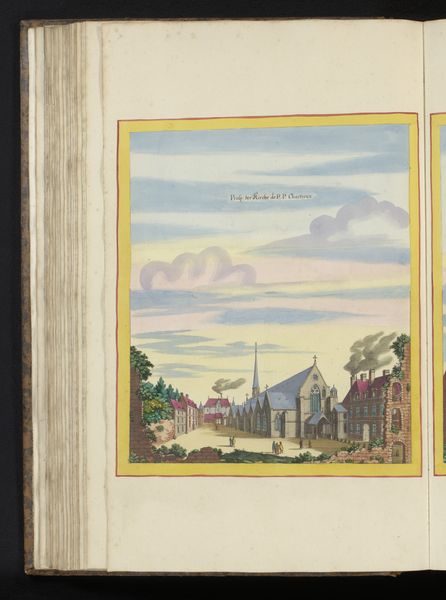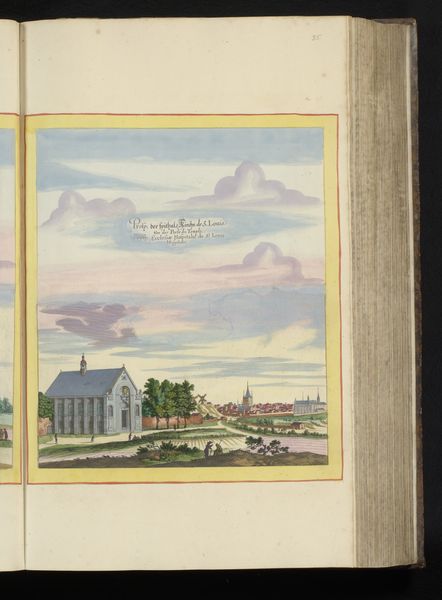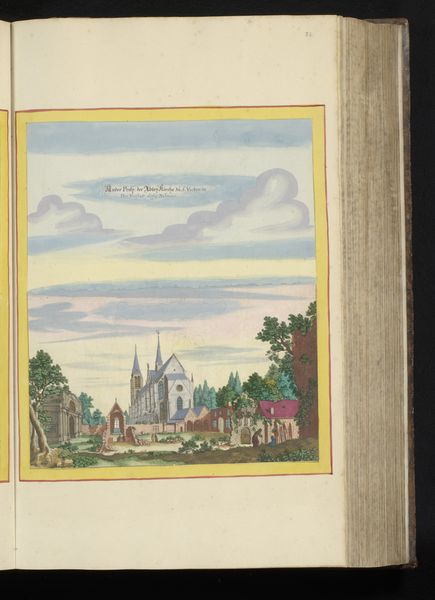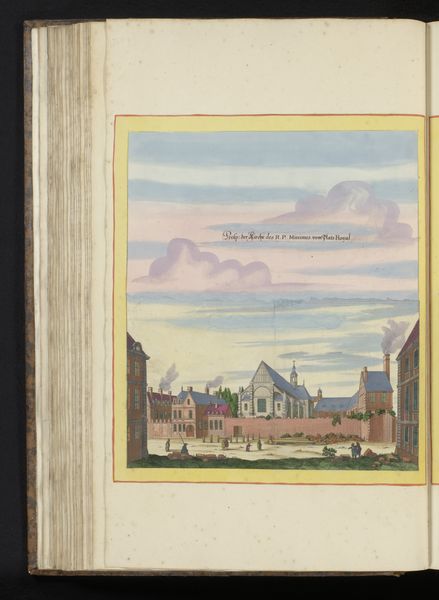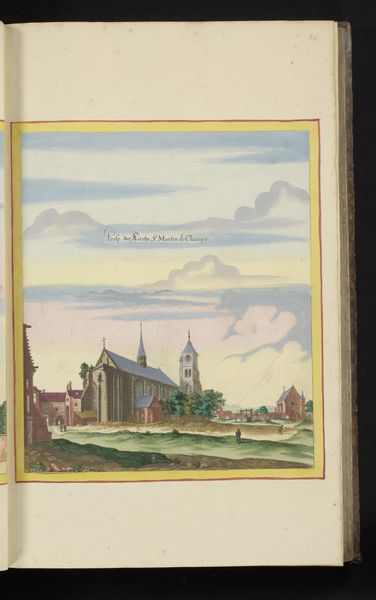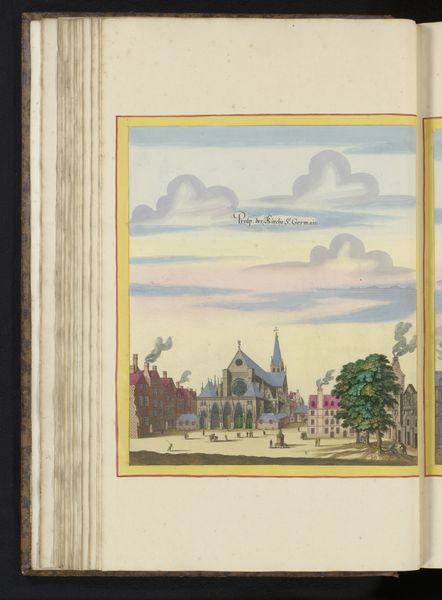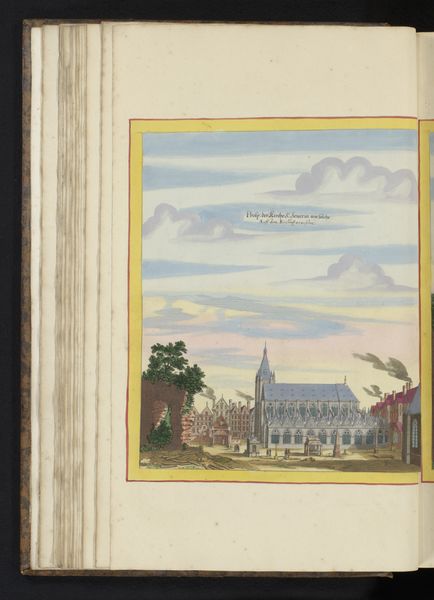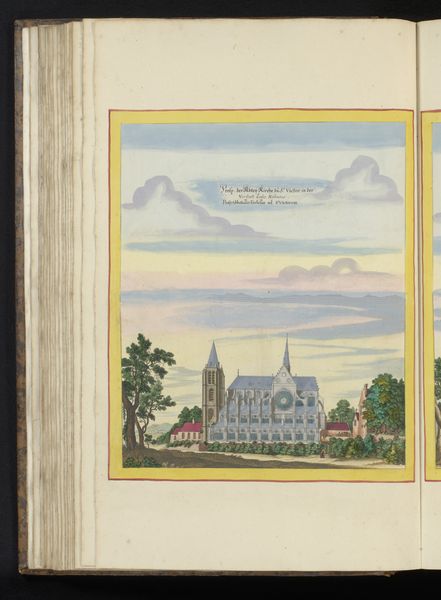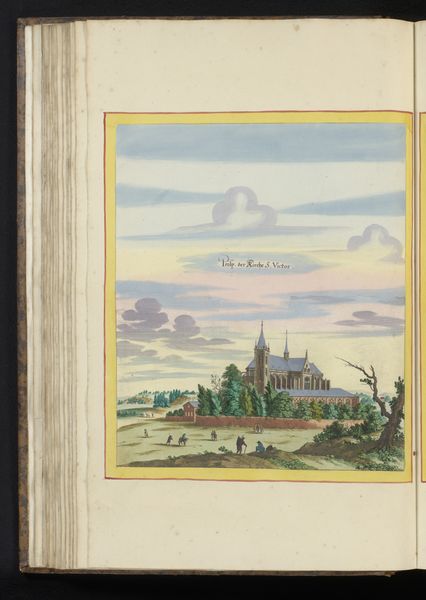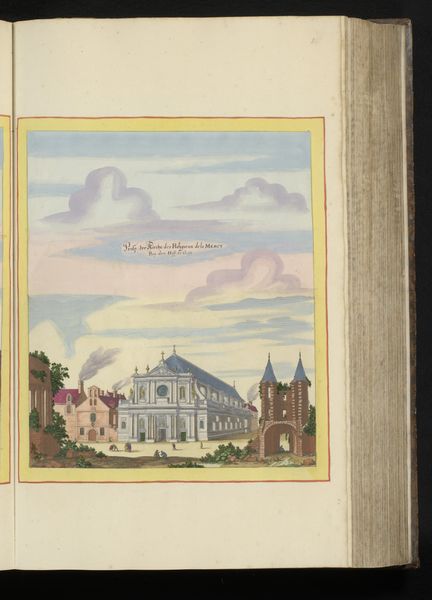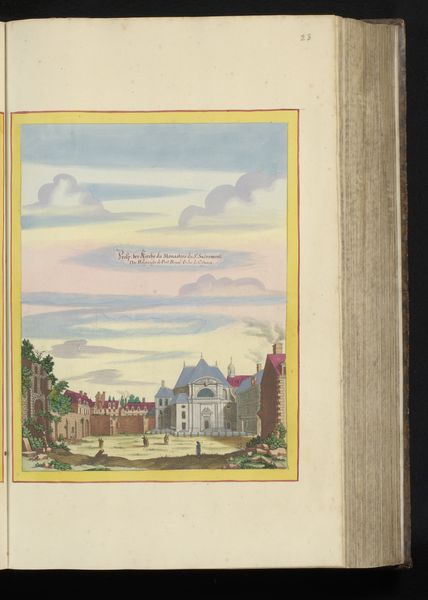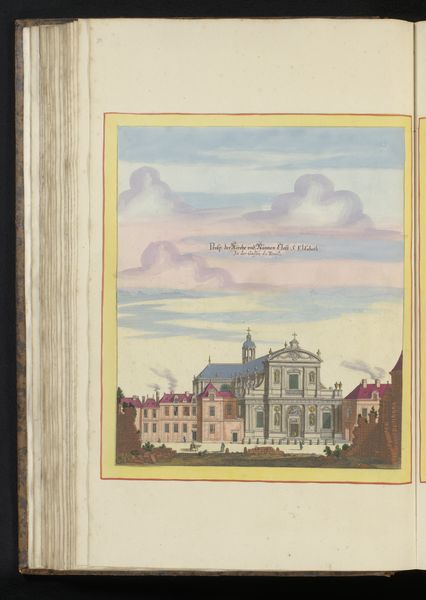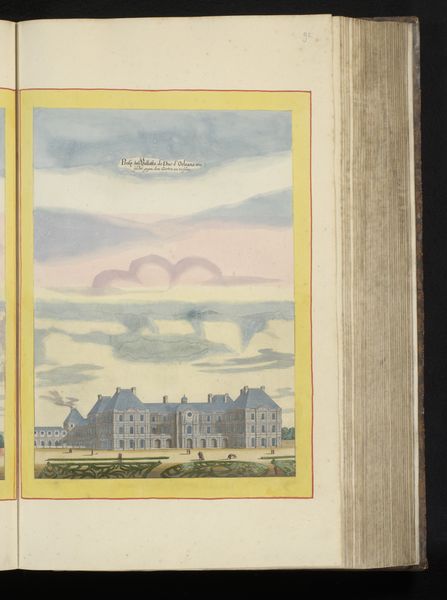
painting, watercolor
#
baroque
#
painting
#
landscape
#
watercolor
#
coloured pencil
#
cityscape
Dimensions: height 330 mm, width 277 mm, height 534 mm, width 330 mm
Copyright: Rijks Museum: Open Domain
Curator: Welcome! Here we have "Zijaanzicht van de Karthuizer kerk te Parijs," a cityscape created with watercolor by Matthäus Merian II around 1655. It’s currently held at the Rijksmuseum. Editor: It feels remarkably calm, almost like a stage set. The soft hues, the muted architecture... there's a dreamlike quality to it, even a bit melancholy, don't you think? Curator: I see what you mean. I am curious about the process, about the choices Merian made. Look closely, the precise lines suggesting an engraving was a part of his practice, filled in later perhaps, giving an impression of standardization, where a spiritual architectural icon is mass-produced in multiple versions. Editor: And think about what that church represented: order, faith, a hierarchy, visual manifestation of God's place in earthly affairs. Notice how it is placed in relation to that smoke stack! Curator: Yes, the buildings nestled within an industrializing city. The architecture, the steeple piercing the sky—they’re carefully positioned, suggesting not just faith, but also perhaps power and control visualized against the everyday world. Editor: Absolutely, these visual choices become incredibly powerful cultural tools, reinforcing not only the authority of the church, but even embedding an aspiration towards some higher ideals of society that the church has built for people! Curator: We can even speculate on the economic base needed to support not only its religious leaders and worshippers but an artist to memorialize its visual legacy within a larger context of civic pride. Consider the very pigments used, where they come from, who made them and sold them... It makes you wonder. Editor: Fascinating. For me, the composition speaks to the symbolic role the church played in 17th-century Paris. It's not just a building; it is the symbolic structure of social and spiritual belief in that society at that moment! Curator: It reminds us how art and its materiality are both a mirror to and a participant in the structuring of reality. The lines we draw are more solid than they might appear. Editor: Exactly, looking beyond the surface to its significance, art echoes the enduring need to represent the world—and its power dynamics—through evocative imagery. Curator: Thank you for those compelling insights! Editor: Thank you! It has been enlightening!
Comments
No comments
Be the first to comment and join the conversation on the ultimate creative platform.
